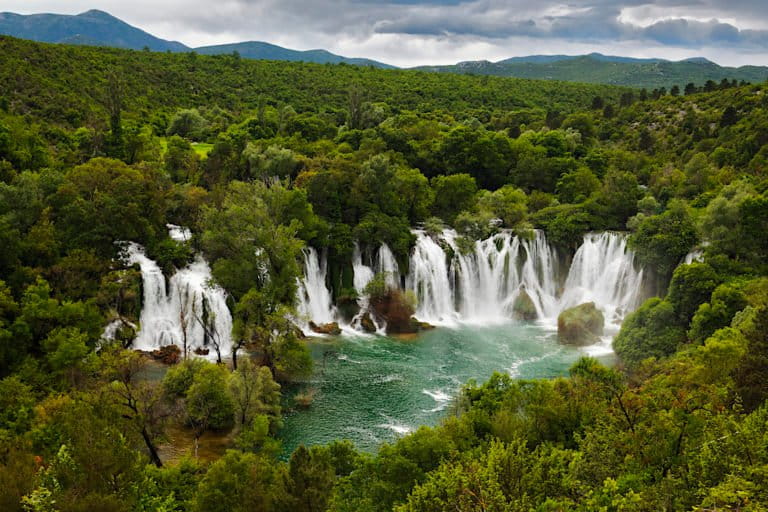- Rapid biological surveys are a well-known way to establish the richness of an ecosystem and advocate for its conservation.
- A corps of scientists and conservationists has used such surveys to prove that the rush to build thousands of new hydroelectric dams in southern Europe threatens to drown a rich heritage, with impressive results.
- A proposal to dam one of the last free-flowing rivers in Europe was halted on the basis of one such survey, in addition to much conventional activism, and the group has since turned its focus to other threatened rivers in the region.
- “It might be the highest density of trout species on Earth,” podcast guest Ulrich Eichelmann says of these rivers, which also host a wealth of bugs, bats, birds and beauty — plus a deep cultural heritage.
“It might be the highest density of trout species on Earth,” says podcast guest Ulrich Eichelmann of Balkan countries’ riverine legacy, which has become threatened by a tsunami of hydroelectric dam proposals in recent years: 3,200 mostly small hydropower plants are proposed to be built in the next few years, his organization Riverwatch estimates.
So Riverwatch partnered with EuroNatur to launch Scientists for Balkan Rivers, a corps of researchers from around Europe that rapidly assesses the biological diversity at stake — from mollusks to mammals, bugs and birds — if the Europe’s last free-flowing rivers disappear under reservoirs.
They’ve documented great biological richness and also identified species new to science, a heritage that looks likely to protect these rivers from flow-altering energy projects.
Click the play button to listen here:
Ulrich Eichelmann is an ecologist and conservationist who has spent the past three decades working to protect and restore Europe’s rivers. Eichelmann is the founder and CEO of Austria-based NGO Riverwatch, as well as the coordinator of the Save the Blue Heart of Europe campaign, an initiative that aims to better understand the impressive variety of life that depends on the rivers of the Balkan Peninsula, and to protect those rivers from being dammed.
Save the Blue Heart of Europe has managed multiple science weeks so far, the most recent of which was this summer on the Neretva River in Bosnia-Herzegovina, and one of the most successful of which, on the Vjosa River in Albania, factored into a successful campaign to have the site of a massive dam proposal declared as a national park instead.

Eichelmann shares his thoughts on these efforts and why, as he says, the work is so important from many angles:
“Beside all the facts about biodiversity, hydropower, and megawatt-hours, it’s a story about beauty.”
Europe already has more than a million barriers like dams on rivers, with 23,000 of them registered as hydroelectric units, Eichelmann says. But with climate change-induced drought threatening to diminish their capabilities, momentum for the campaign to keep these Balkan rivers flowing freely has increased.
Related listening: A 2021 podcast with Ana Colovic Lesoska, a biologist and Goldman Environmental Prize winner who was instrumental in shuttering two hydropower projects in North Macedonia’s Mavrovo National Park, click play here:

Eichelmann was featured extensively in a documentary film, Blue Heart: The Fight for Europe’s Last Wild Rivers, produced by outdoor gear company Patagonia, view it here.
Subscribe or follow the Mongabay Newscast wherever you get your podcasts, from Apple to Spotify, you can also listen to all episodes here on the Mongabay website or download our free app for Apple and Android devices to gain fingertip access to new shows and all our previous episodes.

Follow Mike Gaworecki on Twitter here: @mikeg2001
Editor’s note: The number of Balkan dam proposals previously cited of 2,796 was updated to Riverwatch’s latest estimate of 3,200.
See related coverage here at Mongabay:
“Largest of its kind” dam in Cameroon faces backlash from unimpressed fishmongers
FEEDBACK: Use this form to send a message to the author of this post. If you want to post a public comment, you can do that at the bottom of the page.